
Shedding light on rare diseases: open data and model organisms
Why open data from model organisms is essential for rare disease research.
2023
perspectivesscience

Why open data from model organisms is essential for rare disease research.
2023
perspectivesscience

Jo McEntyre talks about data services, open data and a new era for research assessment.
LAB MATTERSPEOPLE & PERSPECTIVES2023
lab-matterspeople-perspectivesperspectives
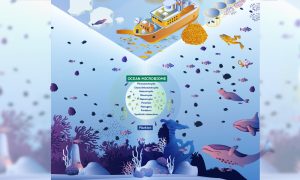
Microbial communities play essential roles in ocean ecology and planetary health. A recent publication highlights priorities for understanding and protecting ocean microbiomes.
SCIENCE & TECHNOLOGY2022
sciencescience-technology
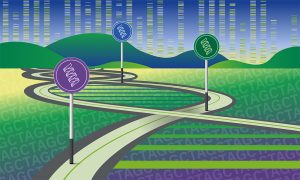
Scientists identify previously unexplored gene segments to be added to human genome databases.
SCIENCE & TECHNOLOGY2022
research-highlightssciencescience-technology

EMBO Director Fiona Watt discusses preprints, data sharing, and evaluation in light of EMBL’s new Open Science policy
LAB MATTERSPEOPLE & PERSPECTIVES2022
lab-matterspeople-perspectives
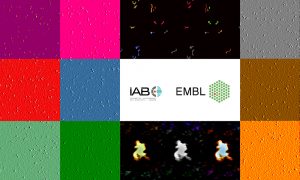
The memorandum of understanding (MoU) signed between EMBL and the Institute for Advanced Biosciences (IAB) a year ago has already catalysed new grants for joint research projects related to cancer and infection biology, thereby deepening collaborative activities.
CONNECTIONSLAB MATTERS2021
connectionslab-matters
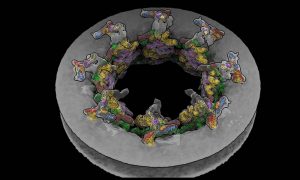
EMBL Hamburg’s Kosinski Group, the Beck Laboratory at the Max Planck Institute of Biophysics, and colleagues at EMBL Heidelberg recorded the nuclear pore complex contracting in living cells. They visualised the movement with an unprecedented level of detail with help of new software called…
SCIENCE & TECHNOLOGY2021
sciencescience-technology

The agreement focuses on reinforcing the collaboration between scientists to strengthen our understanding of the organism in its environment.
CONNECTIONSLAB MATTERS2021
connectionslab-matters

Showing a continued commitment to providing a diverse and inclusive organisation for conducting leading molecular biology research, EMBL has launched an Equality, Diversity, and Inclusion (EDI) strategy.
LAB MATTERS2021
lab-matters
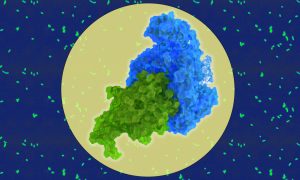
Using cryo-EM and structural biology techniques, EMBL researchers have shown how two proteins of Legionella pneumophila interact. This finding sheds light on a mechanism critical to the infection process and could lead to the development of new drugs to treat pneumonia.
SCIENCE & TECHNOLOGY2021
sciencescience-technology
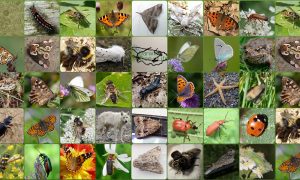
A look back at some of the 2021 highlights from the Darwin Tree of Life partner institutes.
SCIENCE & TECHNOLOGY2021
sciencescience-technology
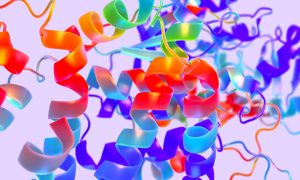
The systematic application of AI in life sciences as in the AlphaFold algorithm for predicting protein structures has been named '2021 Breakthrough of the Year' by Science magazine.
SCIENCE & TECHNOLOGY2021
sciencescience-technology

EMBL alumnus Denis Duboule has been selected as the speaker for the inaugural Kafatos Lecture to take place in October 2022.
EMBL ANNOUNCEMENTS2021
alumniembl-announcements

EMBL announces the release of its new Open Science Policy, contributing to positive culture change across the life sciences.
LAB MATTERS2021
lab-matters
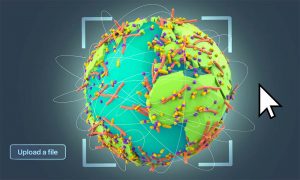
Bork Group at EMBL Heidelberg analysed a new global gene database to study how genes emerge and spread across various habitats on our planet. In the future, the group will expand the database and use it for studying microbial gene evolution and dispersal at a finer-grained scale.
SCIENCE & TECHNOLOGY2021
sciencescience-technology
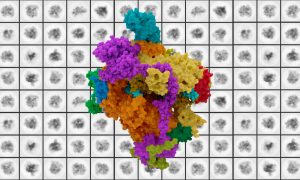
New structural biology research provides fundamental information critical to understanding enzyme mutations connected to rare diseases and cancers.
SCIENCE & TECHNOLOGY2021
sciencescience-technology

EMBL Senior Scientist and Head of the Genome Biology Unit is among the researchers honoured for outstanding work by the German Research Foundation (Deutsche Forschungsgemeinschaft, DFG).
EMBL ANNOUNCEMENTSLAB MATTERS2021
embl-announcementslab-matters
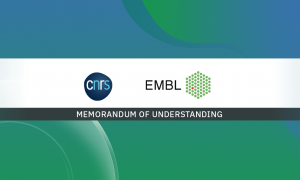
EMBL and the French National Centre for Scientific Research (CNRS) signed a memorandum of understanding.
CONNECTIONSLAB MATTERS2021
connectionslab-matters
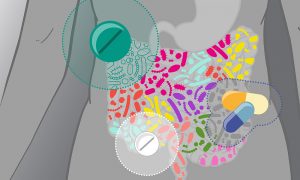
Researchers studying a massive cohort of European patients have found that commonly prescribed drugs for cardiometabolic disorders can have long-term effects on the gut microbiome. Such effects can complicate the understanding of how disease affects the microbiome and must be taken into…
SCIENCE & TECHNOLOGY2021
sciencescience-technology

RNA vaccines, such as the ones for COVID-19, represent a new approach in vaccine technology. Cy Jeffries, faculty staff scientist at EMBL Hamburg, explains the clever technology behind RNA vaccines, and how structural biology contributes to its development. EMBL Hamburg collaborated on several…
SCIENCE & TECHNOLOGY2021
sciencescience-technology
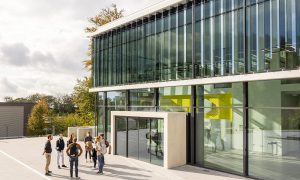
The new EMBL Imaging Centre has announced its first open user call, and new project evaluation process and training opportunities.
EMBL ANNOUNCEMENTSLAB MATTERS2021
embl-announcementslab-matters
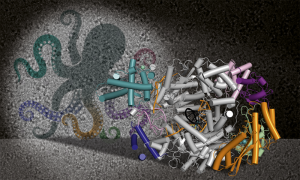
EMBL structural biology is part of an international collaboration addressing zoonotic disease caused by Lassa virus.
SCIENCE & TECHNOLOGY2021
sciencescience-technology

Using gene editing and three types of microscopy, one of EMBL’s newest group leaders is deciphering the functions of one of the smallest molecules involved in cell division, motility, and signalling, known as a centriole.
LAB MATTERSPEOPLE & PERSPECTIVES2021
lab-matterspeople-perspectives
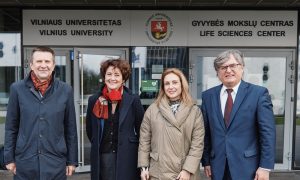
EMBL has taken another step towards strengthening its scientific relationship with Lithuania.
CONNECTIONS2021
connectionsevents

Maria Zimmermann-Kogadeeva is one of EMBL’s newest group leaders and a computational biologist whose research group applies computational modelling to better understand the metabolism of gut bacteria and their potential to have far-reaching impacts on other organs.
LAB MATTERSPEOPLE & PERSPECTIVES2021
lab-matterspeople-perspectives

Tudor Groza joins EMBL-EBI as our new Phenomics Team Lead. We found out from Tudor exactly what this new role will entail
LAB MATTERSPEOPLE & PERSPECTIVES2021
lab-matterspeople-perspectives
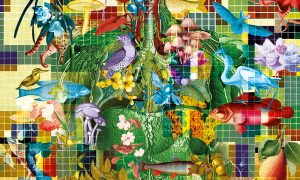
The upcoming 22nd EMBL Science & Society Conference will explore the One Health approach, which advocates for greater cross-sectoral collaboration and communication across the human-animal-environment interface.
CONNECTIONS2021
connectionsevents
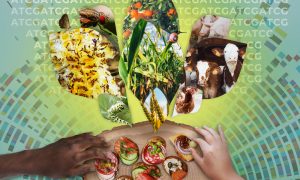
How genomics, open data, and multidisciplinary science can improve food security.
SCIENCE & TECHNOLOGY2021
sciencescience-technology
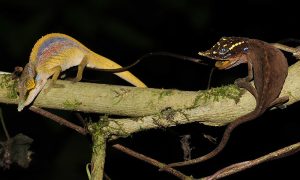
An alumnus reflects on the reptile database he started in 1996 while at EMBL. The database helps understand biodiversity issues.
SCIENCE & TECHNOLOGY2021
alumniscience-technology
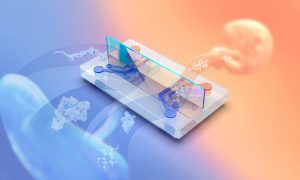
A new model could serve as a platform to investigate critical placenta barrier phenomena, including defence against bacteria, viruses, and parasites.
LAB MATTERSSCIENCE & TECHNOLOGY2021
lab-mattersscience-technology

A new life sciences lecture series commemorates the legacy of former EMBL Director General Fotis Kafatos for people around the world.
EMBL ANNOUNCEMENTS2021
alumniembl-announcements
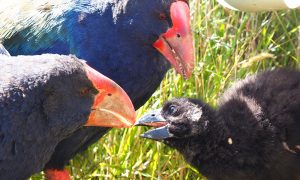
EMBL alum Lara Urban has developed mobile DNA approaches to monitor impacts upon biodiversity in remote areas of New Zealand and elsewhere.
SCIENCE & TECHNOLOGY2021
alumniscience-technology
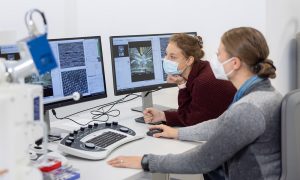
Correlative microscopy service enables PhD student from Switzerland to study structure and location of proteins cells use to communicate.
LAB MATTERSSCIENCE & TECHNOLOGY2021
lab-mattersscience-technology
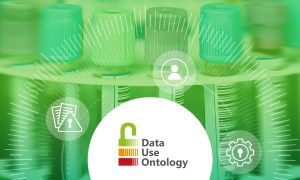
The GA4GH Data Use Ontology (DUO) supports a data authorisation and access framework to streamline consent to use biomedical data
SCIENCE & TECHNOLOGY2021
sciencescience-technology
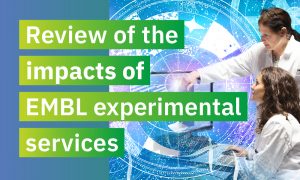
Independent impact review finds EMBL experimental services are ‘critical’ for research and endorses EMBL as a world-class service provider for academia and industry.
LAB MATTERSSCIENCE & TECHNOLOGY2021
lab-mattersscience-technology
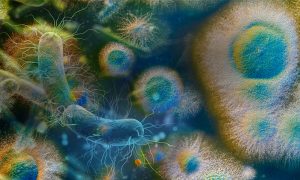
A vast, curated collection of bacterial genomes is now organised, searchable and open to the community.
SCIENCE & TECHNOLOGY2021
sciencescience-technology
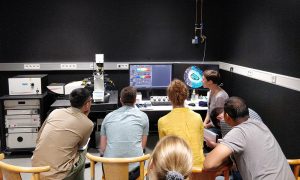
EMBL's PhD and postdoc programmes evolve to the more multidisciplinary way of doing great molecular biology research.
LAB MATTERS2021
lab-matters
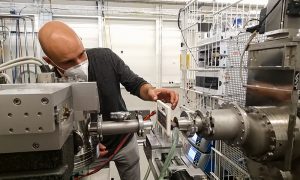
Each year, EMBL Hamburg’s Svergun Group offers practical EMBO courses and lecture courses on biological small-angle X-ray scattering (SAXS). The courses provide young scientists an opportunity to gain hands-on experience by measuring their own samples, and by exploring different aspects of SAXS…
LAB MATTERSSCIENCE & TECHNOLOGY2021
lab-mattersscience-technology

Ken Holmes, outstanding pioneer of structural biology and founder of EMBL´s Hamburg site, died on 2 November 2021 at the age of 87.
PEOPLE & PERSPECTIVES2021
alumnipeople-perspectives
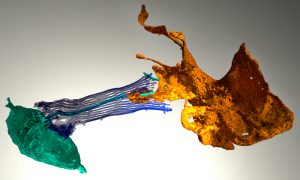
What can sponges tell us about the evolution of the brain? Sponges have the genes involved in neuronal function in higher animals. But if sponges don’t have brains, what is the role of these? EMBL scientists imaged the sponge digestive chamber to find out.
SCIENCE & TECHNOLOGY2021
sciencescience-technology
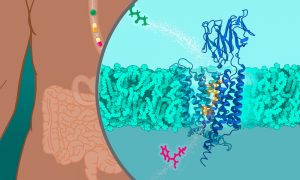
Scientists at EMBL Hamburg determined the molecular structure of Peptide Transporters 1 and 2. The findings will enable developing drugs that more efficiently pass from the gut to target tissues.
SCIENCE & TECHNOLOGY2021
sciencescience-technology

Svetlana Dodonova is one of EMBL's newest group leaders, leading a team of researchers who will study how genetic material is organised inside cells using structural biology approaches.
LAB MATTERSPEOPLE & PERSPECTIVES2021
lab-matterspeople-perspectives

Independent study reveals that EMBL-EBI open data resources are critical for the life sciences.
LAB MATTERSSCIENCE & TECHNOLOGY2021
lab-mattersscience-technology

The engagement of US and European Big Science facilities
CONNECTIONSLAB MATTERS2021
connectionslab-matters
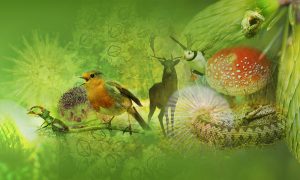
The Darwin Tree of Life project is an unprecedented initiative sequencing 70,000 species
SCIENCE & TECHNOLOGY2021
sciencescience-technology
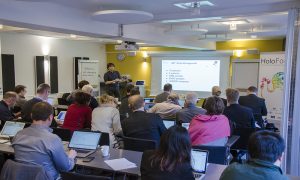
International project uses biomolecular data to improve animal feed and make meat production more sustainable
SCIENCE & TECHNOLOGY2021
sciencescience-technology

Using metagenomic data to find novel enzymes for plastic degradation and beyond
SCIENCE & TECHNOLOGY2021
sciencescience-technology

EMBL attends COP26 to argue for strategy to involve molecular biology in the Green Recovery
CONNECTIONSLAB MATTERS2021
connectionslab-matters
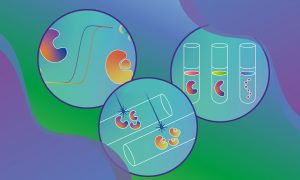
EMBL Hamburg’s Sample Preparation and Characterisation (SPC) Facility has released eSPC, an online platform for analysing data from biophysical experiments. The platform enables the scientific community to analyse data from different experiments without the need to travel.
SCIENCE & TECHNOLOGY2021
sciencescience-technology
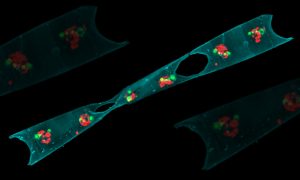
A technology around since the ‘60s, flow cytometry has increasing applications. New leadership at EMBL’s flow cytometry facilities is looking to ease use, expand training, and encourage more collaboration.
LAB MATTERSSCIENCE & TECHNOLOGY2021
lab-mattersscience-technology
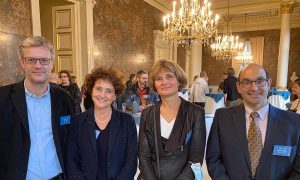
EMBL has held a joint workshop with the Belgian Science Policy Office, BELSPO, underlining their long-standing collaboration and commitment to future cooperation.
CONNECTIONS2021
connectionsevents

The BY-COVID project aims to make infectious disease data, including COVID-19, openly available to everyone.
SCIENCE & TECHNOLOGY2021
sciencescience-technology
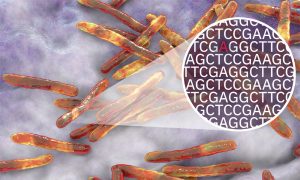
Profiling M. tuberculosis strains from 27 countries to reveal causes of drug resistance.
SCIENCE & TECHNOLOGY2021
sciencescience-technology

Ian Dunham walks us through his career so far including working on the human genome project, seeing his work on the cover of Nature and his current role as Director of Open Targets.
LAB MATTERSPEOPLE & PERSPECTIVES2021
lab-matterspeople-perspectives
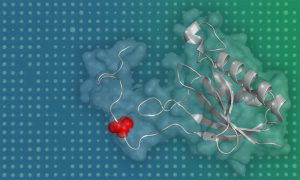
Researchers develop a new high-throughput approach to assess the functional significance of protein phosphosites.
SCIENCE & TECHNOLOGY2021
sciencescience-technology

Professor Edith Heard is among new members elected to US National Academy of Medicine
EMBL ANNOUNCEMENTSLAB MATTERS2021
embl-announcementslab-matters
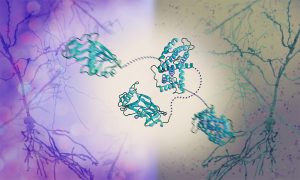
The Graham and Crump groups at the University of Cambridge and the Svergun Group at EMBL Hamburg have discovered a mechanism by which the herpes simplex virus takes control of the molecular machinery of human cells. Their work reveals how a dedicated viral protein hijacks key host proteins, forcing…
SCIENCE & TECHNOLOGY2021
sciencescience-technology
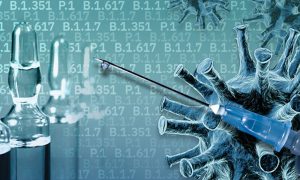
Largest in-depth analysis of genomic data tracks the spread of SARS-CoV-2 lineages in England.
SCIENCE & TECHNOLOGY2021
sciencescience-technology
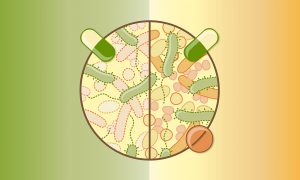
Researchers from EMBL’s Typas group and collaborators have analysed the effects of 144 antibiotics on the wellbeing of gut microbes. The study improves our understanding of antibiotics’ side effects and suggests a new approach to mitigating the adverse effects of antibiotics therapy on gut…
SCIENCE & TECHNOLOGY2021
sciencescience-technology
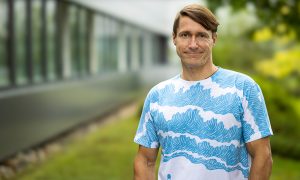
If researchers can identify specifically when good cells go bad, they can potentially understand disease better.
SCIENCE & TECHNOLOGY2021
sciencescience-technology
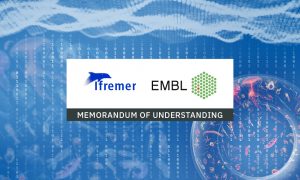
The two organisations have signed a memorandum of understanding to support scientific cooperation in the exploration of coastal and oceanic ecosystems.
CONNECTIONSLAB MATTERS2021
connectionslab-matters
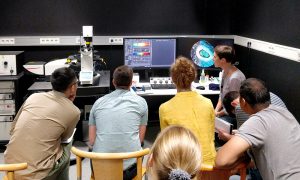
This autumn, students begin their PhD in research groups across EMBL’s six sites.
LAB MATTERS2021
lab-matters

EMBL will host a conference to look at the state of the pandemic, lessons learned, and ways to improve pandemic preparedness. Here’s a sneak peek into what promises to be another interesting and informative EMBL conference.
SCIENCE & TECHNOLOGY2021
eventsscience-technology
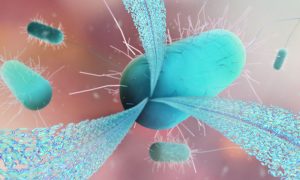
Structural biology provides insights into the diverse functions of fibrous protein in humans, amphibians, and bacteria.
SCIENCE & TECHNOLOGY2021
sciencescience-technology

EMBL scientists and colleagues have developed an interactive atlas of the entire marine worm Platynereis dumerilii in its larval stage. The PlatyBrowser resource combines high-resolution gene expression data with volume electron microscopy images.
SCIENCE & TECHNOLOGY2021
sciencescience-technology
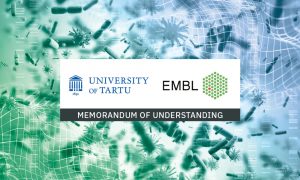
A memorandum of understanding (MoU) has been signed between EMBL and the University of Tartu, a leading centre of research and training. The MoU aims to strengthen cooperation between EMBL and the life science research community in Estonia.
CONNECTIONSLAB MATTERS2021
connectionslab-matters

The scientific response to COVID-19 relied on rapid data sharing to understand the biology, epidemiology, transmission, and evolution of the SARS-CoV-2 virus. To meet this need, EMBL-EBI built the European COVID-19 Data Platform in conjunction with the European Commission, the European Open…
2021
technology-and-innovation
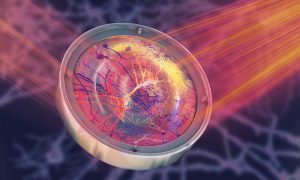
Scientists in EMBL’s Prevedel Group have developed a pioneering microscopy technique that allows researchers to observe cells hidden within opaque tissues, such as live neurons embedded deep in the brain.
SCIENCE & TECHNOLOGY2021
sciencescience-technology

In the lab, Diënty Hazenbrink works with microbes that live in our guts. In her free time, she enjoys wildlife photography. A shared set of skills facilitates both activities.
LAB MATTERSPEOPLE & PERSPECTIVES2021
lab-matterspeople-perspectives

EMBL and Hungarian research institutes will collaborate to address urgent biological and environmental challenges.
CONNECTIONSLAB MATTERS2021
connectionslab-matters
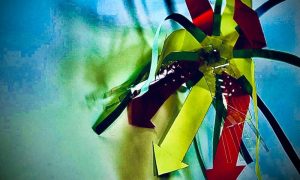
Hundreds of school children explore the beauty of proteins through art
LAB MATTERS2021
lab-matters

Some of the most amazing creatures live in the deep blue sea. The Mesoscopic Imaging Facility (MIF) at EMBL Barcelona was recently involved in studying one unique feature of the octopus: the ephemeral structures on the surface of their skin called Kölliker’s organs.
SCIENCE & TECHNOLOGY2021
sciencescience-technology

EMBL and Helmholtz Association have signed a memorandum of understanding. The expanded collaboration of both institutions will focus on research related to health.
CONNECTIONSLAB MATTERS2021
connectionslab-matters
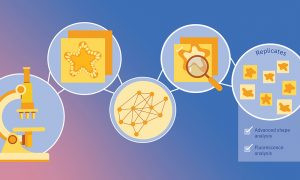
MOrgAna is an open source, user-friendly, modular software that is able to analyse organoids with machine learning.
SCIENCE & TECHNOLOGY2021
sciencescience-technology
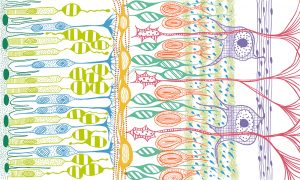
EMBL scientists have found evidence of an unexpected role for retinal cells in pre-processing visual information; their results provide potential opportunity for future prosthetic visual aids.
SCIENCE & TECHNOLOGY2021
research-highlightssciencescience-technology
3D-Beacons Network acts as a one-stop shop for protein structures by combining and standardising data from several providers.
CONNECTIONS2021
connectionsscience

A research collaboration used machine learning to map tumour molecular make-up, potentially paving way to more customised cancer treatment.
SCIENCE & TECHNOLOGY2021
sciencescience-technology
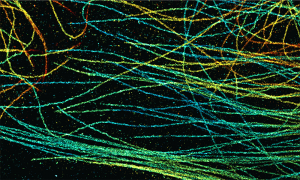
Packaged for simple installation and free use, the novel method DECODE enables researchers to reduce imaging times and increase localisation density in single-molecule localisation microscopy (SMLM).
SCIENCE & TECHNOLOGY2021
sciencescience-technology

Former EMBL Director General Professor Iain Mattaj was awarded the German Cross of Merit (‘Verdienstkreuz 1. Klasse des Verdienstordens der Bundesrepublik Deutschland’) at a ceremony held at EMBL Heidelberg on 9 September 2021.
EMBL ANNOUNCEMENTS2021
alumniembl-announcements
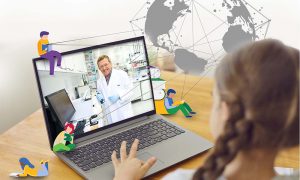
EMBL's science education department makes the latest scientific research more accessible for teachers and students.
LAB MATTERS2021
eventslab-matters
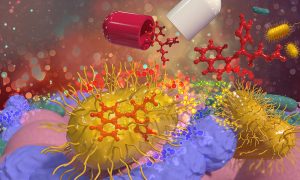
A new collaborative study led by EMBL group leaders Kiran Patil, Nassos Typas, and Peer Bork has found that common medications accumulate in human gut bacteria. This process reduces drug effectiveness and affects the metabolism of common gut microbes, thereby altering the gut microbiome.
SCIENCE & TECHNOLOGY2021
sciencescience-technology
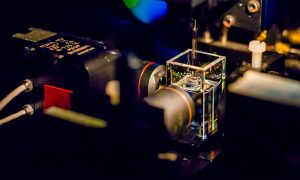
In the Mesoscopic Imaging Facility (MIF) at EMBL Barcelona, researchers study the details of biological systems in the context of organs, body parts, or entire organisms. This image shows OPTiSPIM1, one of the custom light-sheet microscope setups available at the facility.
SCIENCE & TECHNOLOGY2021
sciencescience-technology
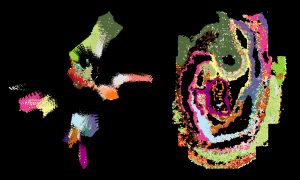
Researchers have combined spatial gene expression information with single-cell genomics data to create a high-resolution atlas of mouse organogenesis.
SCIENCE & TECHNOLOGY2021
sciencescience-technology
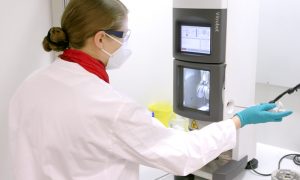
Giulia Zanetti from the Institute of Structural and Molecular Biology (ISMB) in London explains how the collaboration with the Cryo-Electron Microscopy Service Platform enabled her group to reveal the structure of protein transport complexes.
LAB MATTERSSCIENCE & TECHNOLOGY2021
lab-mattersscience-technology
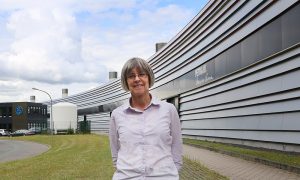
The new team leader at EMBL Hamburg talks about her plans to establish biological X-ray imaging and high-throughput tomography.
LAB MATTERSPEOPLE & PERSPECTIVES2021
lab-matterspeople-perspectives
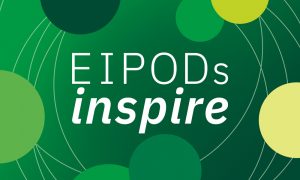
EMBL launches new mentoring opportunity, linking Master’s students with postdoctoral researchers.
LAB MATTERS2021
lab-matters

EMBL Director General Edith Heard has been elected a member of the German National Academy of Sciences Leopoldina. Her admission to the ‘Human Genetics and Molecular Medicine’ section recognises her outstanding professional contributions to science.
EMBL ANNOUNCEMENTSLAB MATTERS2021
embl-announcementslab-matters
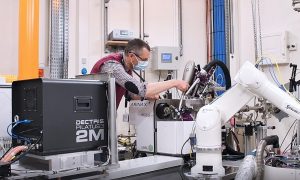
MASSIF-1, run jointly by EMBL Grenoble and the ESRF, is a beamline for macromolecular crystallography. It is used by the research community to study the 3D structure of proteins, which is important for drug development.
LAB MATTERSSCIENCE & TECHNOLOGY2021
lab-mattersscience-technology
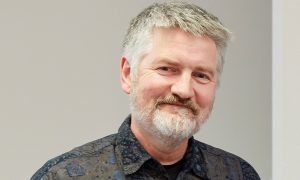
EMBL alumnus Angus Lamond reflects on the process of translating the importance of fundamental research – to EMBL and wider society.
PEOPLE & PERSPECTIVES2021
alumnipeople-perspectives

A community of scientists is looking at the estimated three billion heart muscle cells in a human heart to better understand heart disease.
SCIENCE & TECHNOLOGY2021
alumniscience-technology

Distinctions recognise Peer’s development and sharing of bioinformatics tools as well as his significant contributions to bioinformatics research, education, and services.
LAB MATTERSPEOPLE & PERSPECTIVES2021
lab-matterspeople-perspectives

Analysis of more than 2 million images has boosted understanding of ocean microbes, shedding light on the distribution of nitrogen-fixers at a global level
SCIENCE & TECHNOLOGY2021
sciencescience-technology
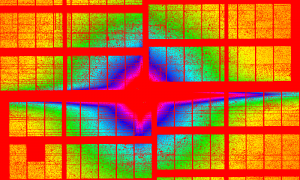
A collaboration led by EMBL Hamburg’s Svergun Group used small-angle X-ray scattering (SAXS) at the European XFEL to obtain data on samples containing coronavirus spike proteins and antibodies that bind them.
SCIENCE & TECHNOLOGY2021
sciencescience-technology
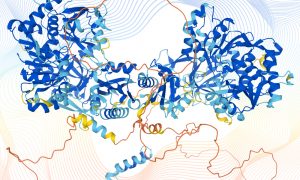
Partners use AlphaFold, the AI system recognised last year as a solution to the protein structure prediction problem, to release more than 350,000 protein structure predictions including the entire human proteome to the scientific community.
SCIENCE & TECHNOLOGY2021
sciencescience-technology

DeepMind and EMBL-EBI to make millions of protein structure predictions freely available to the scientific community.
SCIENCE & TECHNOLOGY2021
sciencescience-technology
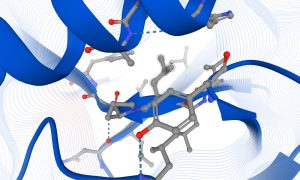
A discussion of the applications that AlphaFold DB may enable and the possible impact of the resource on science and society.
SCIENCE & TECHNOLOGY2021
sciencescience-technology
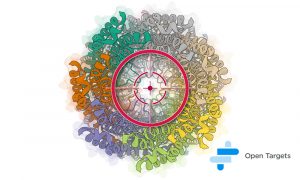
Researchers establish a framework for identifying new drugs capable of exploiting a cell’s own machinery.
SCIENCE & TECHNOLOGY2021
sciencescience-technology
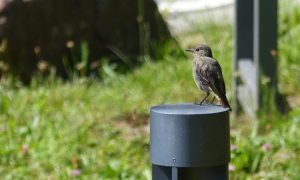
Mehdi Khadraoui, a former member of the EMBL Communications team, took this close-up of a black redstart.
LAB MATTERS2021
lab-matters

EMBL Director General Edith Heard has warmly welcomed Fiona Watt, who will become the new director of EMBO.
EMBL ANNOUNCEMENTSLAB MATTERS2021
embl-announcementslab-matters

EMBL alumni Ilaria Piazza and Ken Holmes have been recognised for their outstanding contributions, and will receive their awards as part of the celebrations for EMBL World Alumni Day.
PEOPLE & PERSPECTIVES2021
alumnipeople-perspectives
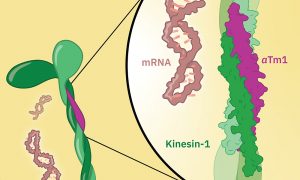
EMBL scientists generate a high-resolution crystal structure of the Kinesin-1/aTm1 transport complex in the fruit fly.
SCIENCE & TECHNOLOGY2021
sciencescience-technology
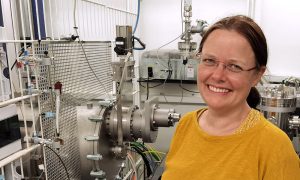
EMBL’s Melissa Graewert and colleagues are taking a structural biologist’s approach to better understanding nanoplastic particles.
SCIENCE & TECHNOLOGY2021
sciencescience-technology

We all like a story about rediscovering treasures, right? Well, that’s just what happened recently at EMBL Grenoble!
PEOPLE & PERSPECTIVES2021
alumnipeople-perspectives

Research in the Typas group uncovers new details of the strategies Salmonella uses to survive in infected cells.
SCIENCE & TECHNOLOGY2021
sciencescience-technology
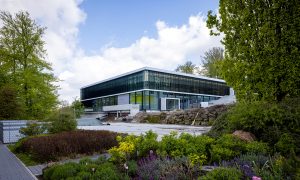
The EMBL Imaging Centre is preparing for external user access, after an on-time and on-budget build and handover to the science team.
CONNECTIONSLAB MATTERS2021
connectionslab-matters

EMBL welcomes Sarah Dyer, the new Non-Vertebrate Genomics Team Leader at EMBL-EBI.
LAB MATTERSPEOPLE & PERSPECTIVES2021
lab-matterspeople-perspectives

Dr Alexander Aulehla has been appointed the new Head of EMBL’s Developmental Biology Unit, and will take up the role starting in July 2021.
EMBL ANNOUNCEMENTSLAB MATTERS2021
embl-announcementslab-matters

EMBL Director General Edith Heard has warmly welcomed the appointment of Professor Maria Leptin as the next President of the European Research Council (ERC)
EMBL ANNOUNCEMENTSLAB MATTERS2021
embl-announcementslab-matters
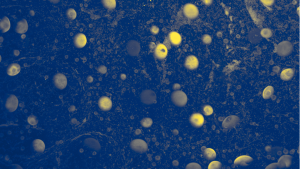
As evocative as a constellation of planets, these egg cells within a mouse ovary are at different stages of maturity.
SCIENCE & TECHNOLOGY2021
picture-of-the-weeksciencescience-technology
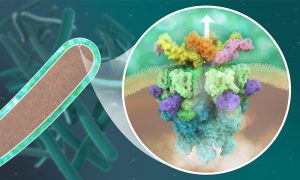
EMBL Hamburg’s Wilmanns and Kosinski groups have determined the detailed structure of a bacterial protein complex critical for tuberculosis infection.
SCIENCE & TECHNOLOGY2021
sciencescience-technology
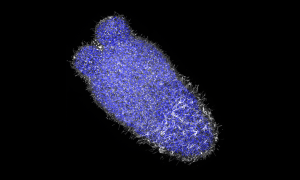
EMBL PhD student Anniek Stokkermans captured this side view of a Nematostella vectensis larva during this transition, using instrumentation in the Advanced Light Microscopy Facility at EMBL Heidelberg.
SCIENCE & TECHNOLOGY2021
picture-of-the-weekscience-technology

Anna Erzberger, one of EMBL’s newest group leaders, will provide unique perspective as a theoretical biological physicist.
LAB MATTERSPEOPLE & PERSPECTIVES2021
lab-matterspeople-perspectives

At an EMBL Science & Society lecture, science journalist Kai Kupferschmidt advocated for accurate, clear and contextual science communication.
PEOPLE & PERSPECTIVES2021
eventspeople-perspectives

After work in antimicrobial resistance, EMBL postdoc Laura Carroll is using machine learning for next-gen antibiotic development.
PEOPLE & PERSPECTIVES2021
people-perspectivesscience
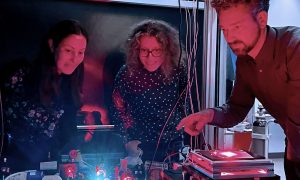
EMBL group leaders Julia Mahamid, Anna Kreshuk & Jonas Ries awarded Chan Zuckerberg Initiative grant to advance what we see inside cells.
LAB MATTERSPEOPLE & PERSPECTIVES2021
lab-matterspeople-perspectives
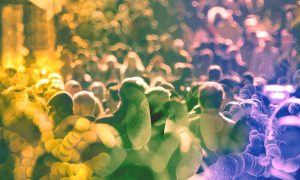
Researchers investigate how external factors can influence the persistence of microbe species in the human gut
SCIENCE & TECHNOLOGY2021
sciencescience-technology
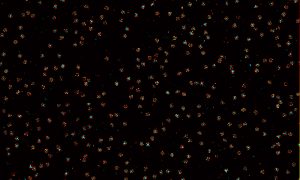
As perfect as a summer night sky, these nuclear pores help calibrate a customised super-resolution microscope in EMBL’s Ries group.
SCIENCE & TECHNOLOGY2021
picture-of-the-weekscience-technology
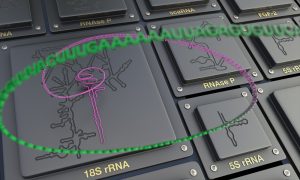
New software enables scientists to visualise RNA secondary structures using the world’s largest RNA structure dataset.
SCIENCE & TECHNOLOGY2021
sciencescience-technology

John Marioni, Alex Bateman, and Takashi Hiiragi have been elected to EMBO Membership.
EMBL ANNOUNCEMENTSLAB MATTERS2021
embl-announcementslab-matters
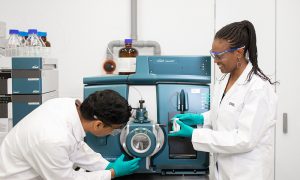
EMBL is conducting an Impact Assessment of our experimental services to understand the value these services have for our external user community. If you have accessed EMBL experimental services at one or more of our facilities to support the conduct of your research, we would like to hear from you.
LAB MATTERS2021
lab-matters
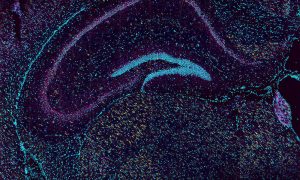
At EMBL, we have many dream teams – groups of individuals who support each other, innovate, and work together. One of those dream teams bridges two core facilities at EMBL Rome.
SCIENCE & TECHNOLOGY2021
picture-of-the-weekscience-technology

EMBL’s EU Green Week event showcased various ways molecular biology research can help solve environmental challenges.
LAB MATTERS2021
lab-matters

EMBL Director Matthias Hentze describes the Environmental Research Initiative: a community effort to solve global environmental challenges.
LAB MATTERSPEOPLE & PERSPECTIVES2021
lab-matterspeople-perspectives

Under the innovative Planetary Biology research theme, EMBL scientists aim to understand life in the context of its environment.
SCIENCE & TECHNOLOGY2021
sciencescience-technology
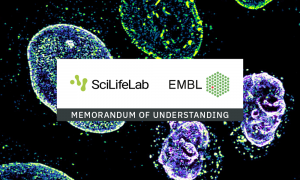
EMBL and the Swedish Science for Life Laboratory sign agreement to advance science together.
CONNECTIONSLAB MATTERS2021
connectionslab-matters
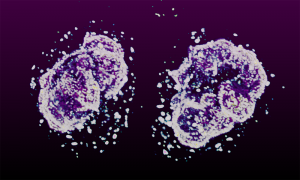
Captured by EMBL postdoc Arina Rybina, these ‘nuclear twins’ are two daughter nuclei straight after division of a HeLa cell.
SCIENCE & TECHNOLOGY2021
picture-of-the-weekscience-technology

The largest in-depth analysis of genomic surveillance data mapping out the dynamics of 62 lineages of the SARS-CoV-2 virus.
SCIENCE & TECHNOLOGY2021
sciencescience-technology
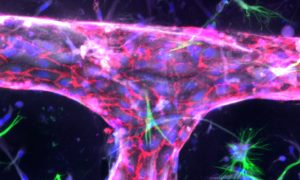
The Bernabeu Group aims to increase our knowledge of cerebral malaria, using in vitro engineered networks of human blood vessels and brain cells.
SCIENCE & TECHNOLOGY2021
picture-of-the-weekscience-technology
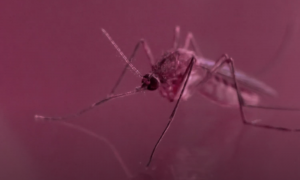
EMBL scientists support research on malaria by providing freely available data resources and using innovative experimental approaches. Our Course and Conference Office facilitates the exchange of knowledge in the field by hosting the annual BioMalPar conference.
SCIENCE & TECHNOLOGY2021
sciencescience-technology

EMBL’s most recent Science and Society seminar explored how best to harness big data to address multi-faceted issues of a pandemic.
CONNECTIONS2021
connectionsevents
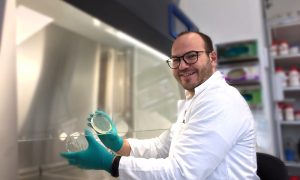
The Gesellschaft für Biochemie und Molekularbiologie has awarded a FEBS Anniversary Prize to Michael Zimmermann for his gut microbiome research.
EMBL ANNOUNCEMENTSLAB MATTERS2021
embl-announcementslab-matters
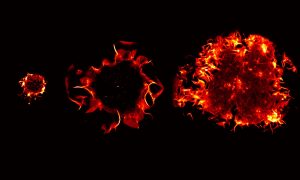
The EMBL Picture of the Week features a series of Jurkat T cells during different stages of the activation process.
SCIENCE & TECHNOLOGY2021
picture-of-the-weekscience-technology

Leading international experts gathered to showcase progress in the fight against COVID-19 and share lessons for the future.
CONNECTIONS2021
connectionsevents
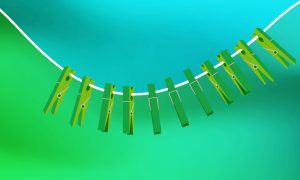
Researchers at EMBL Hamburg reveal how peg-like proteins clasp and reshape the cell membrane
SCIENCE & TECHNOLOGY2021
sciencescience-technology
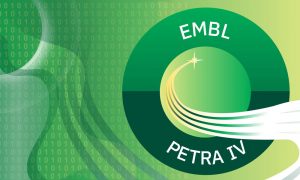
A workshop run by EMBL Hamburg explored opportunities for structural biology at the future, upgraded PETRA IV synchrotron.
SCIENCE & TECHNOLOGY2021
eventsscience-technology
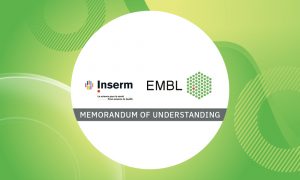
A memorandum of understanding has been signed between EMBL and Inserm to strengthen their scientific cooperation.
CONNECTIONSLAB MATTERS2021
connectionslab-matters

EMBL scientists have combined artificial intelligence (AI) algorithms with two cutting-edge microscopy techniques.
SCIENCE & TECHNOLOGY2021
sciencescience-technology

Zehra Sayers explains what makes the SESAME synchrotron special, why we should not fear failure, and why curiosity is her biggest driver.
PEOPLE & PERSPECTIVES2021
alumnipeople-perspectives

The EMBL-Tara Ocean Foundation collaboration will expand opportunities to jointly explore molecular connections between ocean and humankind.
EMBL ANNOUNCEMENTSLAB MATTERS2021
embl-announcementslab-matters
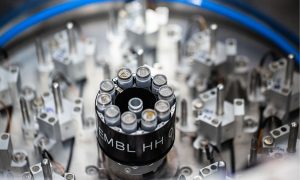
EMBL Hamburg’s integrated structural biology facility has contributed to the success of a large-scale SARS-CoV-2 study
SCIENCE & TECHNOLOGY2021
sciencescience-technology

Researchers reveal the best technology for assembling reference genomes.
SCIENCE & TECHNOLOGY2021
sciencescience-technology

The European Molecular Biology Laboratory and the Italian Institute of Technology have signed an agreement to expand the scope of their collaboration to include areas of mutual interest and in the context of EMBL’s 2022-2026 Programme “Molecules to Ecosystems”.
CONNECTIONSLAB MATTERS2021
connectionslab-matters

EMBL Director General Edith Heard has been elected into the US National Academy of Sciences, recognising her contributions to research.
EMBL ANNOUNCEMENTSLAB MATTERS2021
embl-announcementslab-matters
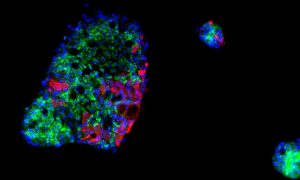
EMBL scientists, together with collaborators from Heidelberg University, have provided further evidence of the gut’s role in COVID-19.
SCIENCE & TECHNOLOGY2021
sciencescience-technology
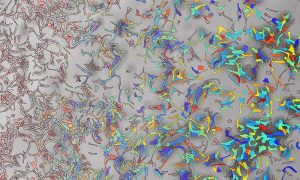
A page from a biologist’s colouring book? EMBL’s new interior wall design? Not quite – a bunch of liver cells, grown in the lab so that scientists can learn about fatty liver disease, or steatosis.
SCIENCE & TECHNOLOGY2021
picture-of-the-weekscience-technology

Edith Heard has been appointed to a new World Health Organization advisory council.
CONNECTIONSLAB MATTERS2021
connectionslab-matters

A memorandum of understanding has been signed between EMBL, Collège de France, and the Institute of Biology of the Ecole Normale Supérieure (IBENS).
CONNECTIONSLAB MATTERS2021
connectionslab-matters
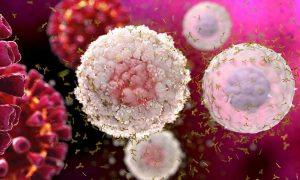
Researchers identify differences in immune response in asymptomatic COVID-19 cases compared to those with severe symptoms
SCIENCE & TECHNOLOGY2021
sciencescience-technology
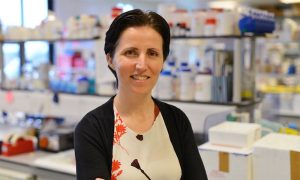
In a talk on 29 April, Professor Jeanette Woolard will share her experience of creating a more positive research culture
LAB MATTERS2021
lab-matters
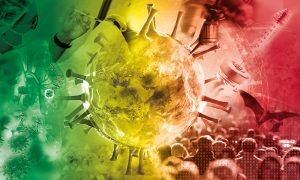
EMBL and Portugal are bringing together leading scientists to highlight the role of fundamental research in tackling infectious diseases.
CONNECTIONS2021
connectionsevents
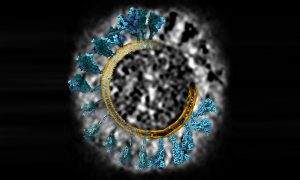
What does coronavirus’s spike protein look like in 3D? EMBL scientists and colleagues used cryo-electron tomography and molecular dynamics simulations to find out.
SCIENCE & TECHNOLOGY2021
picture-of-the-weekscience-technology
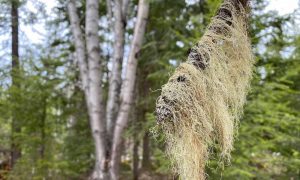
Researchers have used a metagenomics approach to piece together the genomes of yeasts found in wild lichens.
SCIENCE & TECHNOLOGY2021
sciencescience-technology

Scientists from the CABANA project explore how open data is benefiting global research efforts.
CONNECTIONS2021
connectionsscience
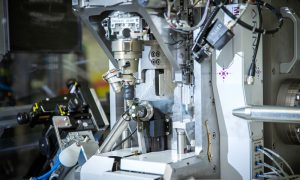
Florent Cipriani, who recently retired as Head of the Instrumentation Team after a long career at EMBL Grenoble, is one of the pioneers of instrumentation development in this field.
LAB MATTERSSCIENCE & TECHNOLOGY2021
lab-mattersscience-technology
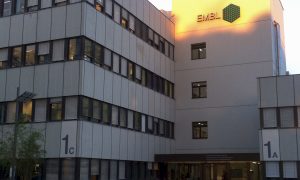
Throwback to June 2014: While EMBL Heidelberg’s main entrance is still in the dark, the well-known EMBL logo is already lit by the morning sun.
LAB MATTERS2021
lab-matterspicture-of-the-week

Researchers use large-scale human genetic studies to identify drug targets important for managing COVID-19 in its early stages
SCIENCE & TECHNOLOGY2021
sciencescience-technology
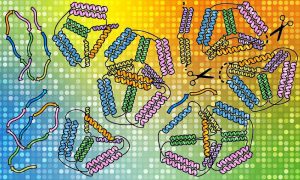
Using EMBL Hamburg’s world-class structural biology infrastructure, researchers advance the folding of protein ‘origami’ designed in the lab.
SCIENCE & TECHNOLOGY2021
sciencescience-technology

Researchers have used human medical and genetic data from UK Biobank to investigate the genetics of age-related diseases
SCIENCE & TECHNOLOGY2021
sciencescience-technology

The challenges and opportunities when setting up a global archive for bioimages
LAB MATTERSPEOPLE & PERSPECTIVES2021
lab-matterspeople-perspectives
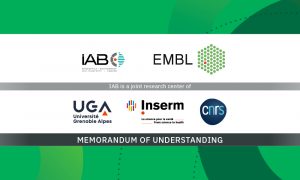
This MoU formalises a 15-year collaboration between the two institutes and strengthens Grenoble as a European research centre in the life sciences.
EMBL ANNOUNCEMENTSLAB MATTERS2021
embl-announcementslab-matters
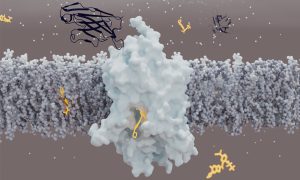
Scientists have determined the structure of Glycine Transporter 1. The finding could open new avenues for developing therapeutics for psychiatric disorders
SCIENCE & TECHNOLOGY2021
sciencescience-technology
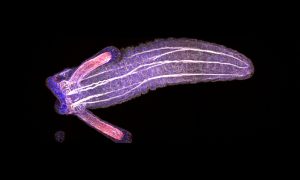
This image of a young Nematostella vectensis polyp shows two of the characteristic tentacles as well as the gaping mouth of the animal.
SCIENCE & TECHNOLOGY2021
picture-of-the-weekscience-technology

The new group leader at EMBL Rome will study how embryos can inherit non-genetic information from their parents that causes stable and heritable effects
LAB MATTERSPEOPLE & PERSPECTIVES2021
lab-matterspeople-perspectives
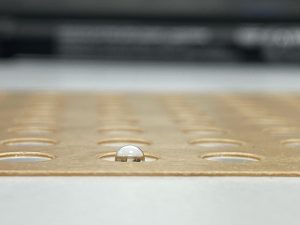
Scientists at EMBL Hamburg use droplets of protein solution to grow protein crystals. By exposing the crystals to X-rays, they are able to determine the protein’s molecular structure.
SCIENCE & TECHNOLOGY2021
picture-of-the-weekscience-technology

The cafeteria at EMBL Heidelberg now offers espresso and cappuccino with a more intense flavour and which are produced in a ‘green’ way.
LAB MATTERS2021
lab-matterspicture-of-the-week

EMBL alumnus Kai Simons did early work with Semliki Forest virus membranes, which is now central to a COVID-19 vaccine.
SCIENCE & TECHNOLOGY2021
alumniscience-technology
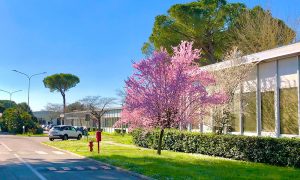
EMBL’s site in Monterotondo has recently been blessed with blue skies and sunshine, leading to trees blooming early on campus.
LAB MATTERS2021
lab-matterspicture-of-the-week

Nassos Typas has received the German VAAM Research Award.
EMBL ANNOUNCEMENTSLAB MATTERS2021
embl-announcementslab-matters

EMBL alumnus Pawel Masiewicz has transferred skills and experience gained at EMBL to oversee starting materials for mRNA vaccine development.
PEOPLE & PERSPECTIVES2021
alumnipeople-perspectives

The contribution of EMBL Group Leader and Senior Scientist Wolfgang Huber has been recognised by the International Society for Computational Biology
EMBL ANNOUNCEMENTSLAB MATTERS2021
embl-announcementslab-matters
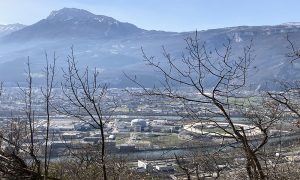
This photo shows the European Photon and Neutron (EPN) science campus where EMBL Grenoble is located. A delightful spring breeze in the air melts the last remaining patches of snow in the mountains.
LAB MATTERS2021
lab-matterspicture-of-the-week

Tracey Brown from Sense about Science shares her thoughts on the need to empower women to share and access scientific information.
LAB MATTERS2021
lab-matters

Members of EMBL’s Equality, Diversity and Inclusion Committee explain how EMBL is choosing to challenge through its LEAP mentoring programme.
LAB MATTERS2021
lab-matters
Scientists in the Stegle group and colleagues have studied induced pluripotent stem cells from around 1,000 donors to identify correlations between individual genetic variants and altered gene expression. They linked more than 4,000 of the genetic variants responsible for altered expression…
SCIENCE & TECHNOLOGY2021
sciencescience-technology
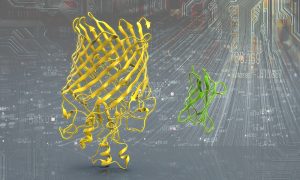
Thousands of new protein structure models, prected using deep learning, now available to explore
SCIENCE & TECHNOLOGY2021
sciencescience-technology

EMBL invites Simon Gallow, an advocate at UN Women UK, to give a talk marking International Women’s Day.
LAB MATTERS2021
lab-matters
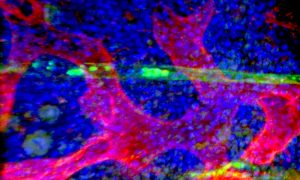
A new method has the potential to boost international research efforts to find drugs that eradicate cancer at its source.
SCIENCE & TECHNOLOGY2021
sciencescience-technology
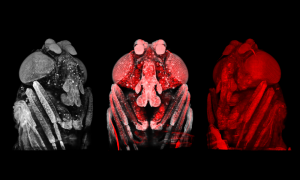
Like caterpillars turning into beautiful butterflies, fruit fly larvae have to go through metamorphosis to finish their development. However, despite the fruit fly Drosophila melanogaster being one of the best studied model organisms in biology, comparatively little attention has been given to this…
SCIENCE & TECHNOLOGY2021
picture-of-the-weekscience-technology
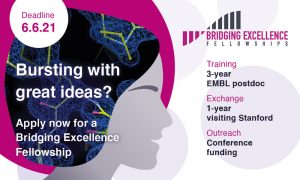
Applications are now open for the Life Science Alliance’s Bridging Excellence Fellowships, enabling postdocs to carry out collaborative projects at EMBL and Stanford University.
EMBL ANNOUNCEMENTSLAB MATTERS2021
embl-announcementslab-matters

EMBL's Environmental Officer Brendan Rouse explains more about his role as a European Climate Pact Ambassador.
LAB MATTERS2021
lab-matters

As one of EMBL’s newest group leaders, Sinem Saka will combine multiple technologies, such as microscopy and single-cell omics, to solve biological puzzles.
LAB MATTERSPEOPLE & PERSPECTIVES2021
lab-matterspeople-perspectives
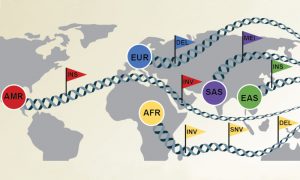
A collaboration including EMBL scientists has created the most diverse set of reference human genomes ever assembled.
SCIENCE & TECHNOLOGY2021
sciencescience-technology

Being a woman in science takes allies, not just great science. Here, EMBL’s L’Oréal–UNESCO Fellows talk about support networks.
LAB MATTERS2021
lab-matters
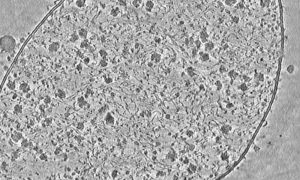
Liang Xue used cryo-electron tomography to capture this detailed image of a Mycoplasma pneumoniae cell.
SCIENCE & TECHNOLOGY2021
picture-of-the-weekscience-technology

Anne Ephrussi has been awarded the German Feldberg Prize 2022 in recognition of her outstanding research.
EMBL ANNOUNCEMENTSLAB MATTERS2021
embl-announcementslab-matters
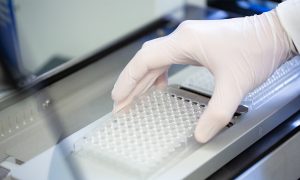
The Sample Preparation and Characterisation (SPC) Facility at EMBL Hamburg is one of the founding members of the Molecular-Scale Biophysics Research Infrastructure (MOSBRI). Within this new European initiative, the SPC Facility will offer services related to membrane proteins, protein complexes,…
CONNECTIONSLAB MATTERS2021
connectionslab-matters

Gautam Dey is fascinated by the evolutionary origins of the nucleus, and is looking forward to making the most of EMBL's infrastructure.
LAB MATTERSPEOPLE & PERSPECTIVES2021
lab-matterspeople-perspectives
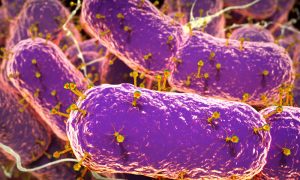
Scientists identify more than 140 000 virus species in the human gut; more than half have never been seen before
SCIENCE & TECHNOLOGY2021
sciencescience-technology

Professor Dame Janet Thornton discusses work–life balance, the support she has received during her career, and how organisations can help staff during the COVID-19 pandemic
LAB MATTERS2021
lab-matters
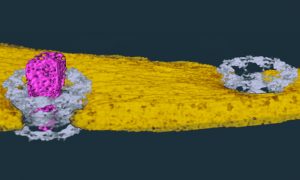
Researchers from EMBL and Heidelberg University Hospital combine high-resolution imaging to observe the infection process in cell nuclei, opening the door for new therapeutics.
SCIENCE & TECHNOLOGY2021
sciencescience-technology
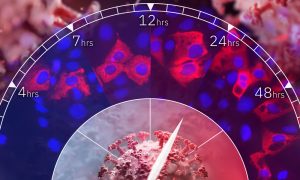
A team of EMBL scientists and colleagues have analysed how the novel coronavirus affects proteins in human cells. They identified several human proteins as potential drug targets to prevent viral replication.
SCIENCE & TECHNOLOGY2021
sciencescience-technology
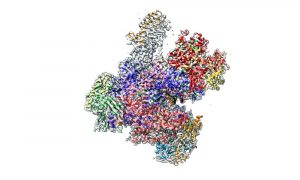
This week's Picture of the Week, which could also be a masterpiece of modern art, shows the enzyme RNA polymerase III, an assembly of 17 individual proteins combined into this complex structure.
SCIENCE & TECHNOLOGY2021
picture-of-the-weekscience-technology
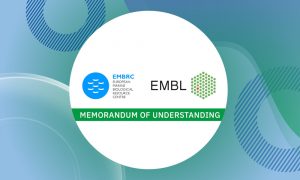
EMBL and EMBRC have signed a memorandum of understanding for increased scientific collaboration.
CONNECTIONSLAB MATTERS2021
connectionslab-matters
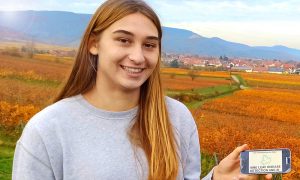
EMBL Teen Maria-Theresa Licka shares how female scientists guided & inspired her to develop an app to ID vine disease.
LAB MATTERS2021
lab-matters
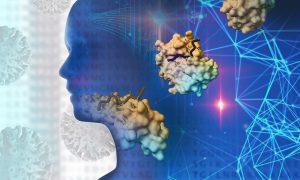
Researchers at EMBL Heidelberg have identified sequences in human proteins that might be used by SARS-CoV-2 to infect cells. They have discovered that the virus might hijack certain cellular processes, and they discuss potentially relevant drugs for treating COVID-19.
SCIENCE & TECHNOLOGY2021
sciencescience-technology

Roshni Mooneeram discusses what Equality, Diversity and Inclusion (EDI) is to her, and what the meaning of allyship is.
LAB MATTERS2021
lab-matters

The regular structures of crystals are a source of inspiration and fascination to us humans. While the crystals in this picture were not grown in nature, but instead by Petra Drncova from EMBL Grenoble, they share the same attributes as those found in nature.
SCIENCE & TECHNOLOGY2021
picture-of-the-weekscience-technology

New EMBL research shows where & to what degree a component of cellular machinery known as RNA Pol III is mutated and becomes problematic.
SCIENCE & TECHNOLOGY2021
sciencescience-technology
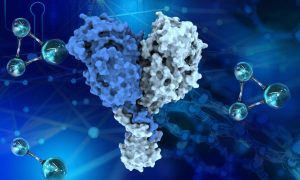
A new paper from the Galej group at EMBL Grenoble describes the structure of key parts of the Integrator complex, involved in gene expression.
SCIENCE & TECHNOLOGY2021
sciencescience-technology

Open letter galvanises life science community in support of open COVID-19 data
EMBL ANNOUNCEMENTSLAB MATTERS2021
embl-announcementslab-matters

A new lineage of coronavirus was first identified in the UK, but why is it spreading much more rapidly within the population?
SCIENCE & TECHNOLOGY2021
sciencescience-technology
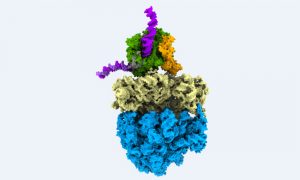
This colourful image shows biological information flow in action: It’s a supramolecular assembly of DNA, RNA and proteins, observed directly inside a bacterial cell while turning genetic information into protein.
SCIENCE & TECHNOLOGY2021
picture-of-the-weekscience-technology
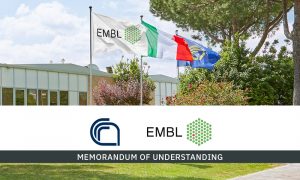
EMBL and CNR have signed a memorandum of understanding to strengthen scientific cooperation. The agreement will foster collaborative projects and integrate them within the European and global scientific landscape.
CONNECTIONSLAB MATTERS2021
connectionslab-matters
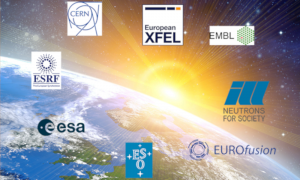
The latest issue of Science in School highlights the eight members of EIROforum.
EMBL ANNOUNCEMENTSLAB MATTERS2021
embl-announcementslab-matters
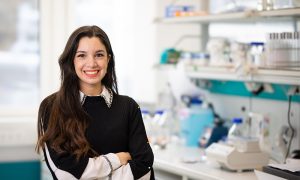
New group leader Nicoletta Petridou explains her fascination with the complexity of early embryo development, and how the interdisciplinary nature of EMBL will aid her research.
LAB MATTERSPEOPLE & PERSPECTIVES2021
lab-matterspeople-perspectives
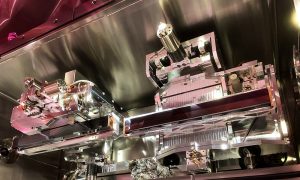
Engineers at EMBL Hamburg installed specially designed mirrors to reflect and focus X-ray beams onto tiny crystals made of proteins or other biological molecules.
SCIENCE & TECHNOLOGY2021
picture-of-the-weekscience-technology
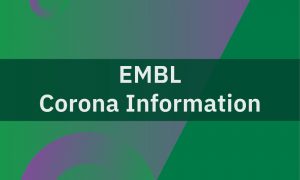
A note on the coronavirus variant B.1.1.7, which has first been described in the U.K. and has spread to 57 countries. The note summarises epidemiological information about the spread of B.1.1.7 in the U.K. collated and in part conducted by researchers from EMBL-EBI.
SCIENCE & TECHNOLOGY2021
sciencescience-technology

EMBL and the German Cancer Research Center in Heidelberg are increasing their already existing collaborations with a Memorandum of Understanding between the two institutions.
CONNECTIONSLAB MATTERS2021
connectionslab-matters
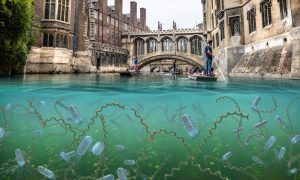
Freshwater sports can cause waterborne infections, but real-time DNA sequencing could help.
SCIENCE & TECHNOLOGY2021
sciencescience-technology

It’s almost a year since the coronavirus outbreak was declared a pandemic, affecting all our lives. While the virus continues its grip on the world, scientists are understanding it better and better, increasing our knowledge about it and opening up new ways to fight it.
SCIENCE & TECHNOLOGY2021
picture-of-the-weekscience-technology
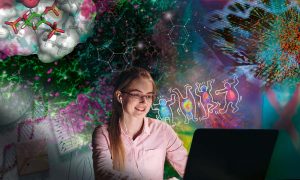
EMBL has a packed schedule of courses and conferences for 2021, ready to go ahead virtually, regardless of limitations on physical gatherings
LAB MATTERS2021
eventslab-matters

The EMBL Imaging Centre is scheduled to open in 2021 with Timo Zimmermann as Team Leader for advanced light microscopy technology development and service provision.
LAB MATTERSPEOPLE & PERSPECTIVES2021
lab-matterspeople-perspectives

One of EMBL’s newest group leaders, Olivier Duss, will explore how RNA folds into functional structures and how it works with proteins to control a diverse range of activities in the cell.
LAB MATTERSPEOPLE & PERSPECTIVES2021
lab-matterspeople-perspectives
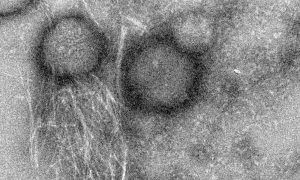
Researchers at the Technion – Israel Institute of Technology and EMBL Hamburg, in collaboration with scientists in Israel and Spain, have discovered remarkable molecular properties of an antimicrobial peptide from the skin of the Australian toadlet. The discovery could inspire the development of…
SCIENCE & TECHNOLOGY2021
sciencescience-technology
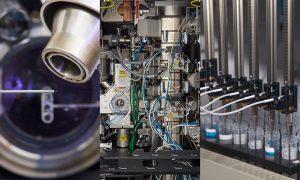
EMBL’s sites in Grenoble, Hamburg, and Heidelberg form the newest Instruct Centre. The new centre offers users access to a broad range of state-of-the-art facilities.
CONNECTIONSLAB MATTERS2021
connectionslab-matters
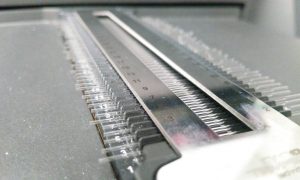
Structural biologists want to study proteins at the atomic level. The device shown in this Picture of the Week is essential for this.
SCIENCE & TECHNOLOGY2021
picture-of-the-weekscience-technology
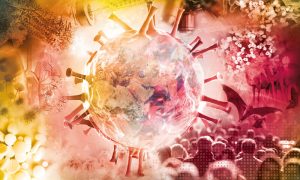
Understanding why disagreement is good for COVID science. EMBL Deputy Director General Ewan Birney offers tips for sorting through the discourse.
PEOPLE & PERSPECTIVES2021
people-perspectivesscience
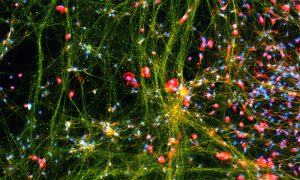
Fluorescent dyes light up a cellular community of neurons and brain immune cells (microglia), which were derived from stem cells.
SCIENCE & TECHNOLOGY2021
picture-of-the-weekscience-technology
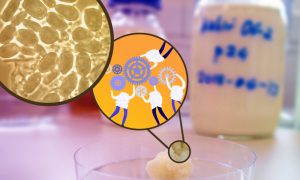
Researchers discovered the dominant species of bacteria in kefir grains cannot endure without other species that help the 'team' survive.
SCIENCE & TECHNOLOGY2021
sciencescience-technology
No matching posts found